It starts with a craving—a fizzy soda on a hot day, a salty crunch during your favorite show, or a candy bar for a quick pick-me-up. These guilty pleasures may feel harmless in the moment, but nutritionists warn they come with a hidden cost. Beneath the flashy packaging and irresistible flavors lies a cocktail of added sugars, unhealthy fats, preservatives, and empty calories that could be slowly sabotaging your health.
We’re not just talking about extra pounds on the scale. Regularly indulging in the wrong kind of junk food has been linked to serious long-term consequences, from spiking blood sugar and cholesterol levels to increasing the risk of heart disease, diabetes, and even some cancers. The worst offenders don’t just lack nutritional value—they actively work against your body’s ability to function at its best.
Yet many of these foods remain kitchen staples, marketed as convenient, fun, or downright addictive. The trouble is, our bodies weren’t designed to process the chemical-laden, hyper-processed ingredients that make these snacks shelf-stable and crave-worthy. And the longer we wait to cut them out, the more damage they quietly inflict.
That’s why we’ve consulted expert nutritionists to compile this ranked list of the absolute worst junk foods you can eat—from the truly terrible to the deceptively bad. If you’re serious about protecting your heart, mind, and metabolism, now is the time to clean house.
Don’t worry—we’re not here to shame your snack drawer. Instead, consider this your wake-up call and a roadmap to smarter, healthier choices. Some of these might surprise you. Others you may have suspected all along. Either way, it’s time to face the truth: these 10 junk foods need to go—before it’s too late.
1. Soda & Soft Drinks
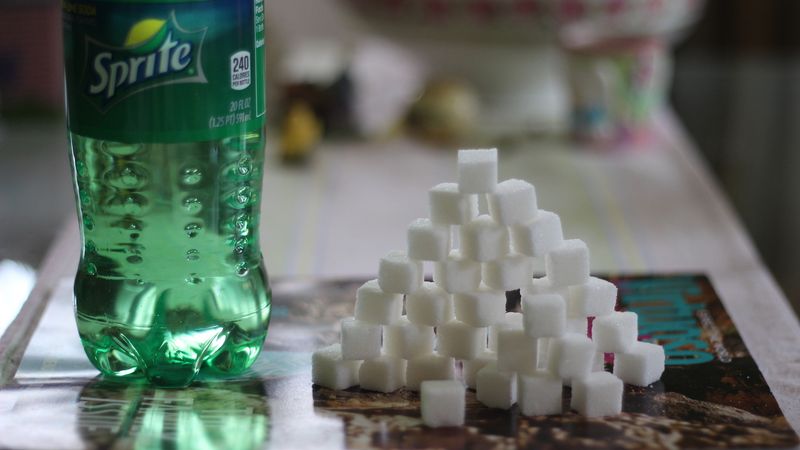
Every can of soda delivers a shocking 10 teaspoons of sugar straight to your system. That’s like eating a bowl of sugar with a straw! Your body wasn’t designed to process this sugar flood, which explains why regular soda drinkers face double the diabetes risk.
The acid in these drinks also attacks your tooth enamel, creating tiny holes where bacteria thrive. Even diet versions aren’t safe havens – artificial sweeteners may actually increase sugar cravings and disrupt gut health.
Most concerning? Children who drink just one soda daily are 60% more likely to become obese, setting them up for lifelong health battles.
2. Processed Meats
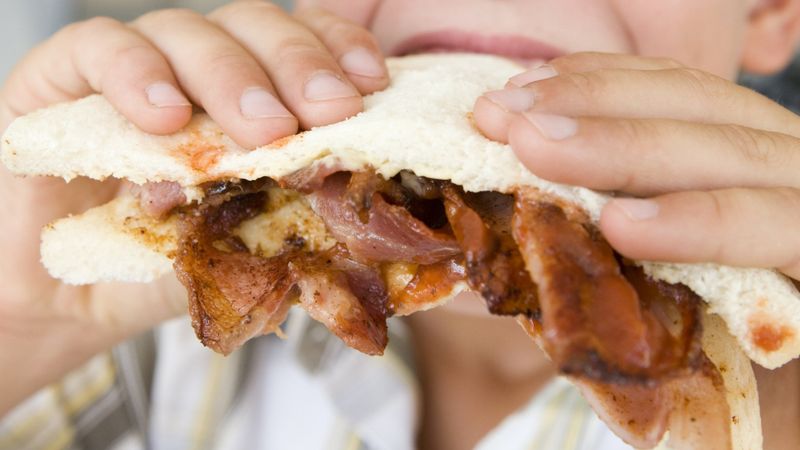
Hot dogs, bacon, and deli meats might taste delicious, but they hide a troubling secret. The World Health Organization officially classifies these foods as Group 1 carcinogens – the same category as cigarettes!
The culprits are nitrates and nitrites, preservatives that give these meats their appealing color but transform into cancer-promoting compounds in your body. A single daily serving of processed meat increases colorectal cancer risk by 18%.
Beyond cancer concerns, these meats pack alarming amounts of sodium and saturated fat, setting the stage for heart disease, high blood pressure, and inflammation throughout your body.
3. Potato Chips & French Fries
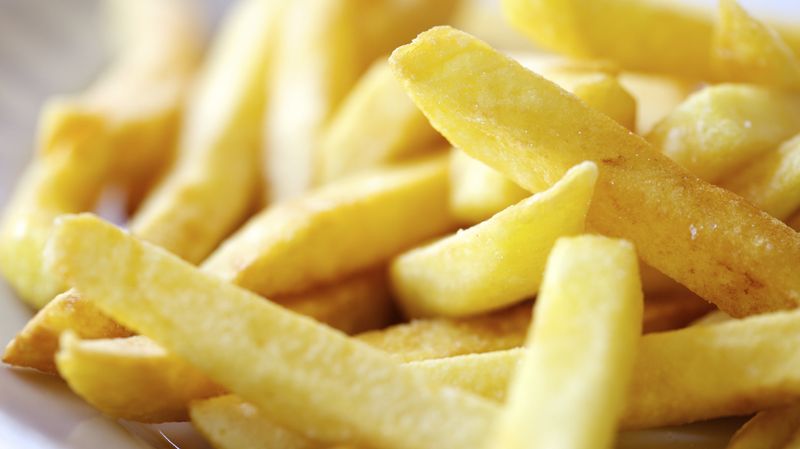
Remember the old potato chip slogan “bet you can’t eat just one”? There’s actual science behind that challenge! These crispy snacks are engineered to hit the perfect bliss point of salt, fat, and crunch that keeps your brain craving more.
When potatoes are fried at high temperatures, they form acrylamide – a compound that lab studies link to cancer. A standard bag of chips contains up to 500 calories but almost zero nutritional value, making them the definition of empty calories.
French fries might be even worse – restaurant versions often soak up trans fats from repeated frying in the same oil.
4. Candy Bars
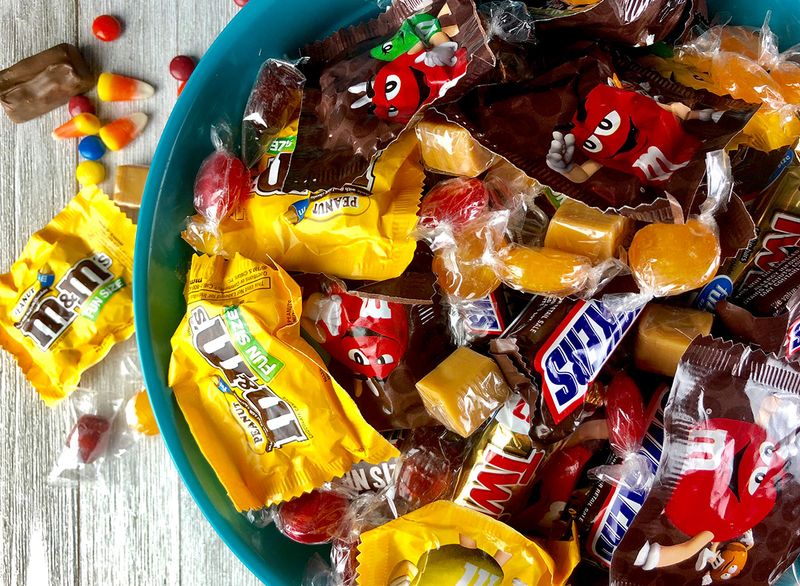
That innocent-looking candy bar triggers a wild rollercoaster inside your body. The concentrated sugar hits your bloodstream almost immediately, causing your pancreas to panic-release insulin. Your energy soars briefly before crashing dramatically, leaving you more tired and hungry than before.
The average chocolate bar contains 7-10 teaspoons of sugar – nearly half your daily recommended limit in one small package! This sugar overload doesn’t just expand your waistline; it triggers inflammation throughout your body.
What’s truly concerning? Research shows sugar activates the same brain reward pathways as addictive drugs, making that 3pm candy habit genuinely hard to break.
5. Instant Ramen
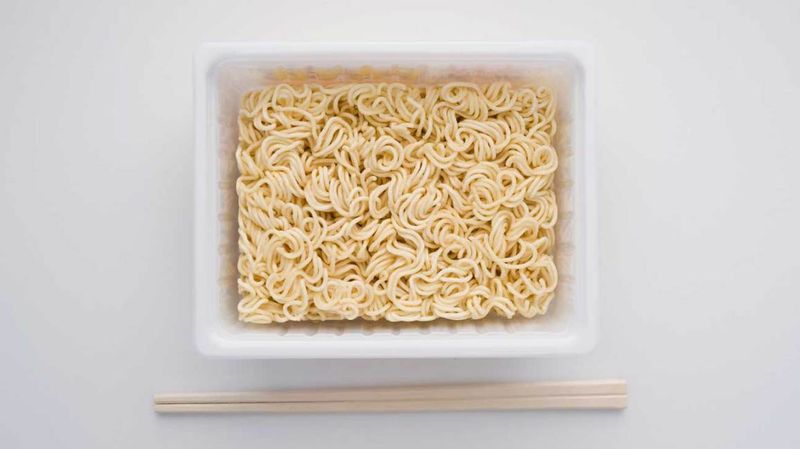
College students beware – that cheap noodle block might cost more than you think in health terms. A single package of instant ramen can contain nearly 1,900mg of sodium – that’s 80% of your entire day’s recommended intake! This sodium tsunami forces your body to retain water and raises blood pressure.
The noodles themselves undergo a concerning process. They’re deep-fried before packaging, which explains why they cook so quickly but also why they’re loaded with unhealthy fats and empty calories.
Most concerning is what’s missing – fiber, protein, vitamins, or any nutritional value that actually supports your body’s needs.
6. Store-Bought Cookies & Pastries

Those packaged cookies might seem like innocent treats, but they’re nutritional outlaws. Many commercial baked goods still contain partially hydrogenated oils – the primary source of dangerous trans fats that raise bad cholesterol while lowering good cholesterol.
The ingredient lists reveal the truth: high-fructose corn syrup, artificial flavors, and preservatives that help them last for months on shelves. Your body has no natural way to process many of these lab-created compounds.
Research connects these processed sweets to increased inflammation markers in the blood – the same markers linked to heart disease, diabetes, and even Alzheimer’s disease. No wonder nutritionists call these cookies “inflammation bombs.”
7. Buttery Microwave Popcorn

Movie night’s favorite snack harbors a surprising villain – and it’s not the butter. The bag lining contains perfluorooctanoic acid (PFOA), a chemical linked to cancer and infertility. When heated, these compounds can transfer directly to your popcorn.
The fake butter flavoring contains diacetyl, a chemical that gives popcorn its buttery smell but has been linked to serious lung problems in factory workers. Manufacturers have removed some concerning chemicals, but many health experts remain wary of the replacements.
One bag can deliver up to 300 calories and 20 grams of fat – mostly the unhealthy saturated kind – turning a potentially healthy snack into a nutritional disaster.
8. Tortilla Chips & Pretzels
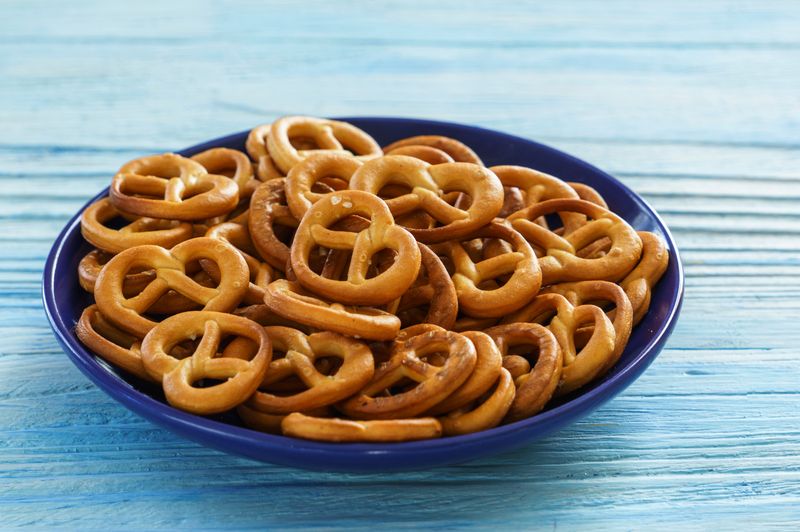
The satisfying crunch of tortilla chips and pretzels masks their health downsides. Made from refined white flour stripped of fiber and nutrients, these snacks spike your blood sugar almost as quickly as pure table sugar. Your body converts this processed carbohydrate straight to glucose.
The real problem is portion control. The average person eats 2-3 times the standard serving size without realizing it. That modest-looking bowl can easily deliver 500+ empty calories before you’ve made a dent in your hunger.
The high sodium content – up to 450mg per serving – triggers both thirst and additional cravings, creating the perfect storm for mindless overeating and water retention.
9. Low-Nutrient Crackers
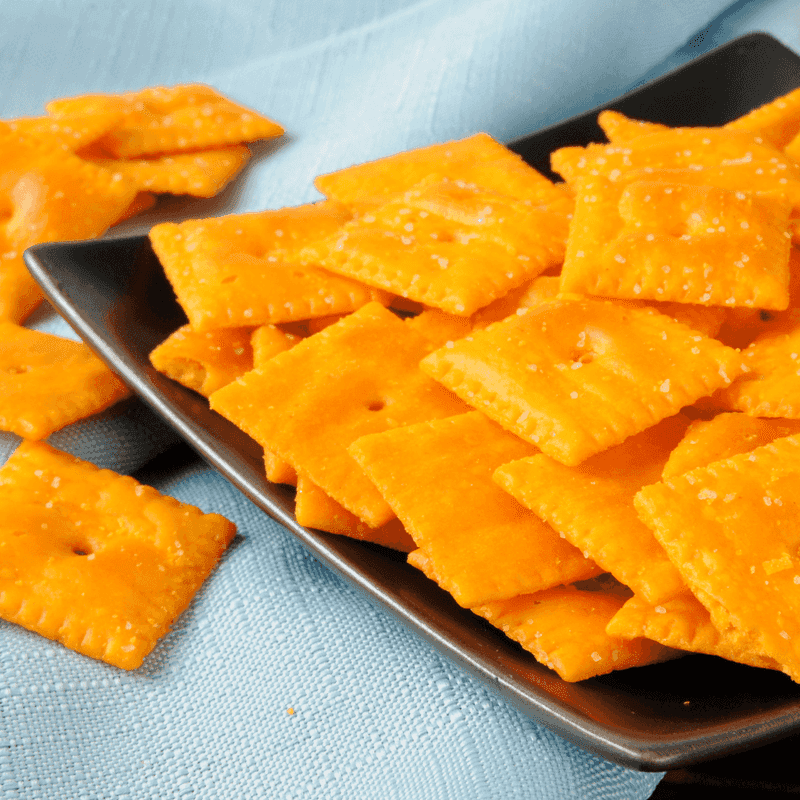
Don’t let health-conscious packaging fool you! Many crackers marketed as “wheat” or “multi-grain” contain mostly refined white flour with just enough whole grains to justify the label. Check the fiber content – if it’s below 2 grams per serving, you’re holding nutritional pretenders.
These snacks create the perfect blood sugar storm. Their refined carbohydrates convert to glucose almost instantly, while their lack of fiber means nothing slows this sugar rush. Your insulin spikes, energy crashes follow, and hunger returns quickly.
Most varieties pack concerning amounts of sodium, vegetable oils, and preservatives. Even “low-fat” versions often compensate with extra sugar and salt to maintain flavor.
10. Store-Bought Frosting

That colorful tub of frosting contains a laboratory’s worth of questionable ingredients. The first ingredient is usually sugar, followed by partially hydrogenated oils (trans fats) that extend shelf life but increase heart disease risk dramatically.
The vibrant colors come from artificial dyes linked to hyperactivity in children and potentially more serious health concerns. Two tablespoons – a typical serving – pack around 20 grams of sugar and virtually zero nutritional benefits.
Perhaps most concerning is what manufacturers don’t have to list: proprietary flavor compounds and certain colorants fall under “artificial flavors and colors” without specific identification. This makes store-bought frosting one of the most chemically complex foods in the typical grocery cart.
Leave a comment